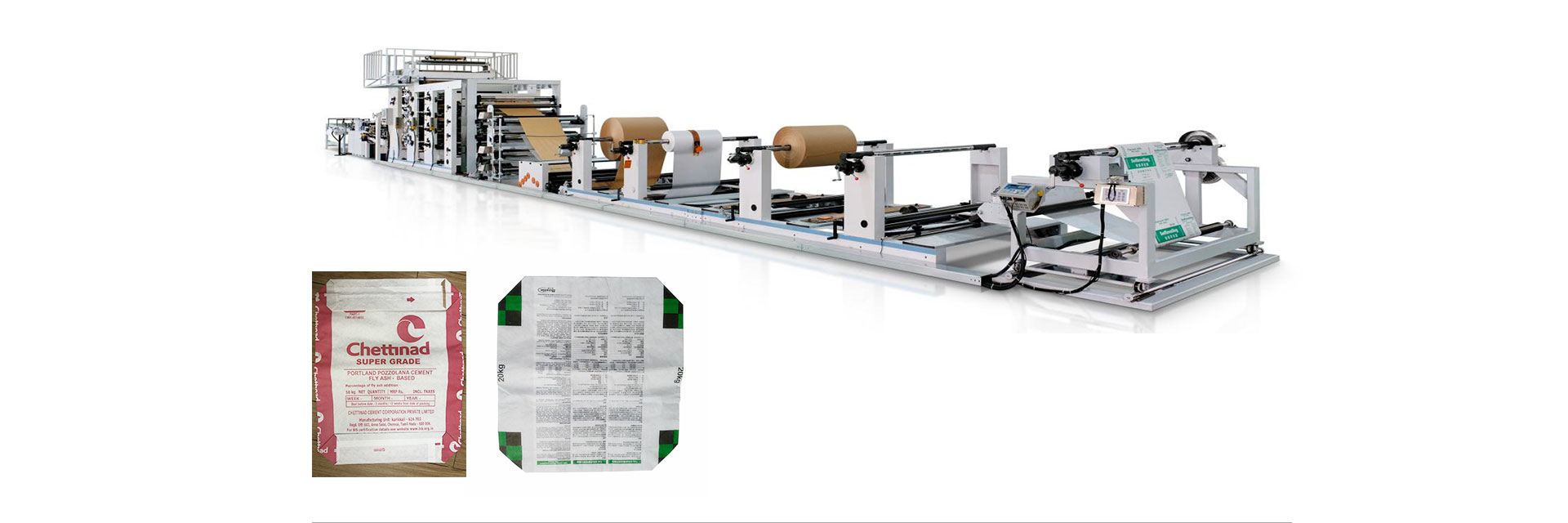Valve Cement Bags Making Machine: A Complete Guide for Manufacturers
In the fast-evolving construction and packaging industries, valve cement bags making machines have become an essential investment for manufacturers seeking efficiency, durability, and high-volume production. These machines are designed to produce valve-type cement bags, commonly used for packaging cement, gypsum, dry mortar, and other powdered building materials. This comprehensive guide will walk you through everything you need to know about valve cement bag machines — from types and features to benefits, production process, and how to choose the right supplier.
What Is a Valve Cement Bags Making Machine?
A valve cement bags making machine is a type of industrial equipment designed to produce paper or plastic bags with a valve-type closure system. These bags are used for packing cement and other fine powders. The valve design allows for efficient and dust-free filling using an automatic packing machine, with minimal spillage and enhanced sealing.
Full Cement Bag Production Line
Types of Valve Cement Bag Machines
There are several types of machines depending on the material, automation level, and end-use:
Paper Valve Bag Making Machine
● Designed to manufacture multi-ply kraft paper bags.
● Ideal for cement, dry mortar, and chemical powder industries.
PP Woven Valve Bag Making Machine
● Produces valve bags from polypropylene woven fabric.
● Often used in bulk packaging industries.
Automatic Valve Bag Machine
● Fully automated process including tube forming, bottom pasting, and valve creation.
● High-speed and low human intervention.
Semi-Automatic Valve Bag Machine
● Suitable for small to medium-scale manufacturers.
● Requires manual feeding or folding in certain steps.
Key Features of High-Quality Valve Cement Bag Machines
When investing in a valve cement bags manufacturing machine, consider the following features:
High Output Capacity: Machines can produce 100–150 bags per minute, depending on design.
Multi-layer Bag Construction: Ability to handle 2–4 ply paper or laminated PP fabric.
Precision Engineering: Ensures tight valve closures for dust-proof performance.
Automated Operation: Touchscreen HMI, servo motors, and PLC control system for accurate functioning.
Bag Customization: Adjustable sizes, lengths, and printing for brand identity.
Energy Efficiency: Low power consumption motors and minimal material wastage.
Benefits of Using Valve Cement Bags Making Machines
High Production Efficiency: Automation reduces manual labor, increases speed, and ensures uniformity.
Improved Bag Strength & Durability: Multi-ply and sealed bottom designs ensure bags withstand heavy loads without tearing.
Better Dust Control: Valve design allows for clean filling and sealing, crucial in cement packaging.
Cost Efficiency: Long-term savings on labor, waste material, and reduced packaging errors.
Custom Branding & Printing: Many machines offer inline flexographic or digital printing options.
Step-by-Step: How a Valve Cement Bag Is Made?
The valve bag manufacturing process varies based on the machine type, but typically includes:
Tube Forming: Kraft paper or PP rolls are unwound and glued to form the cylindrical body of the bag.
Valve Corner Formation: One end of the bag is folded and glued into a valve design.
Bottom Sealing: The bottom is pasted using hot melt glue or heat sealing for plastic bags.
Drying & Finishing: Bags go through a drying tunnel and are stacked for packaging.
Quality Control: Optical sensors and air-leak testers check for defects or incomplete seals.
How to Choose the Right Valve Cement Bag Machine Manufacturer?
Choosing the right supplier is critical for long-term operational success. Look for:
Experience & Reputation: Established manufacturers with proven technology.
Customization Options: Flexibility to accommodate different bag sizes and materials.
After-Sales Service: Installation, training, and maintenance support.
Spare Parts Availability: Fast delivery of components to reduce downtime.
Energy-Efficient Models: Consider sustainability and running costs.
Top manufacturers often offer turnkey solutions, including raw material sourcing, technical consulting, and automated packaging lines.
Top Applications of Valve Cement Bags
Valve bags made using these machines are used for:
● Cement Packaging
● Dry Mortar Bags
● Gypsum Powder Bags
● Chemical Powder Packaging
● Food-Grade Powder Bags (with inner PE coating)
These applications require durable, tamper-proof, and moisture-resistant packaging, all of which are achieved through advanced valve bag manufacturing.
High-end Cement Bag Bottomer Machine
Market Trends and Innovations
The global market for valve bag machines is witnessing innovations such as:
● Smart Bag Making Systems using IoT sensors for diagnostics and maintenance.
● Eco-Friendly Materials, including biodegradable and recyclable bag components.
● Modular Machine Designs for easier upgrades and component replacement.
● AI-based Quality Control for defect detection and production optimization.
As demand for sustainable and high-performance packaging increases, manufacturers must stay ahead with machines that meet global packaging standards.
Final Thoughts
Investing in a valve cement bags making machine is a strategic move for any packaging manufacturer in the building materials industry. With the right machinery, you can produce high-quality valve bags that enhance product safety, increase operational efficiency, and build brand value. Always assess your production needs, material preferences, and market trends before choosing the right model.
For more information or to receive quotes from trusted valve cement bag machine manufacturers, consider contacting verified manufacturer Tecon. The valve cement bags making machine can be customized to your needs. Feel free to contact us for more.


